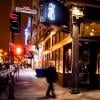
In March of 2020, saxophonist Andrew Speight launched the first of his Live at Five sessions, streaming the sights and sounds of lively bop and post-bop jazz to newly locked-down musicians and fans worldwide. Over the next couple of years, the weekly Sunday sessions showcased a world-class house band and luminary drop-ins.
This June, early on a Sunday afternoon before his 116th consecutive session, Speight invited a half dozen of his high school horn students to the House of Bop. That’s the name with which he’d christened the expansive living room-cum-venue and studio at his residence in Burlingame.
Speight, also a longtime faculty member at San Francisco State University, prepped the visiting teens with something like a Sunday jazz sermon. “I want you to be great musicians,” he proclaimed, and he then warned them against teachers in high school and college who, in his opinion, represent “two full generations of academics who can’t play” and who end up “blocking” the creative spirit of their students.
The sermon was followed by a call to stand up and jam with Speight on alto saxophone, Ralph Moore on tenor, pianist Matt Clark, bassist Essiet Okon Essiet, and drummer Roy McCurdy. “If you’re nervous about this,” Speight advised the youths, “trust your ears. And remember, you’re not just trying to be the best copy.”
As the kids progressed from “Bags’ Groove” to “Blues in F,” their solos sounded more and more confident, bolstered by “shout choruses” from Speight and Moore.
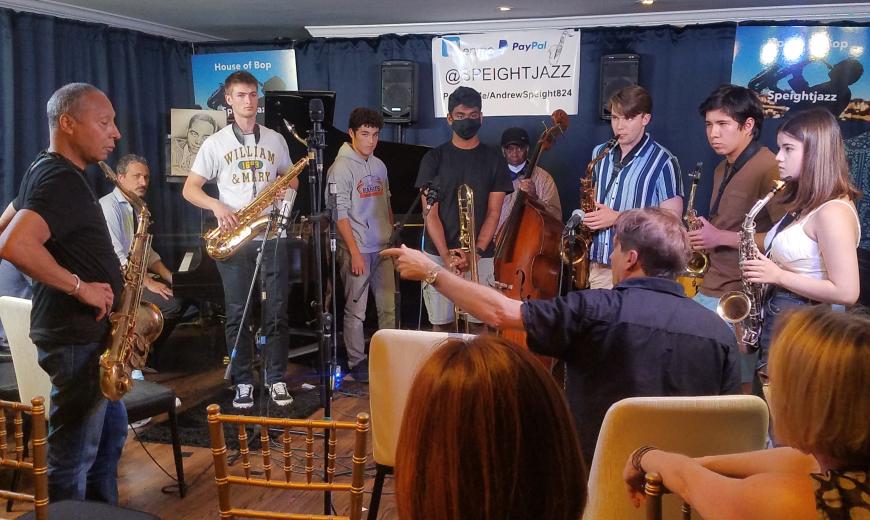
Speight, now 58, grew up in Sydney when jazz education was still sparse in Australia. His father, pianist John Speight, and fellow teacher Jim Holbert did much to remedy that deficiency nationwide, and John introduced his son to jazz as an alternative to the classical training offered in elementary schools. Young Andrew studied guitar, clarinet, and saxophone, discovering that socially “it was an inroad — and an introduction to girls.” He played in garage pop bands, at dances, and at home in duos with his dad, and he sought jazz instruction outside the classroom.
“We weren’t rich,” says Speight, “but I had the best teachers because my father would call in favors from other musicians. One of them knew Benny Carter, so I wrote to Benny. He wrote back and later sent me a mouthpiece, along with a whole bunch of articles on how to play the saxophone, which he’d written back in 1933.”
John Speight also encouraged Andrew to take up golf and sailing, two sports in which he excelled and whose mastery he still links to his approach to jazz. At 16, he was performing publicly in his father’s quartet, though “I favored more bebop, and he favored more of the cool, introspective post-bop” — a sort of generational inversion. “When I discovered bebop,” he adds, “it was very challenging, something I could sink my teeth into, something I needed to work harder at.”
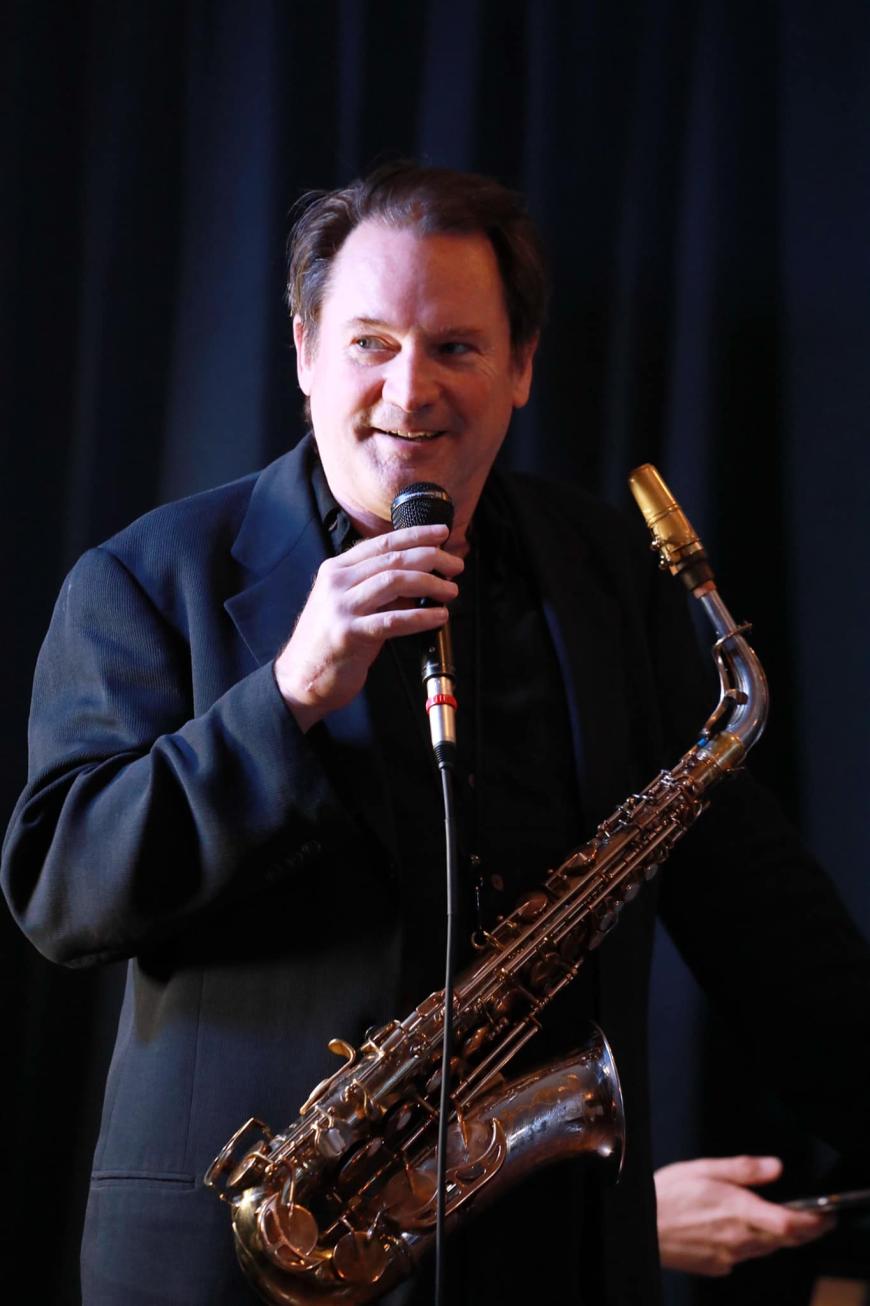
Not long after, Speight was selected by a local promoter to join visiting trumpeter Nat Adderley, younger brother of Julian “Cannonball” Adderley, on stage. “I loved that he came from the bebop tradition but was a very soulful player, very expressive, almost talkative, conversational,” says Speight, citing qualities he himself emulates. “And after that, I knew that I had to be here [in the U.S.]. So I went to New York for a number of years and played the local scene.”
Speight also placed among the first-ever saxophone finalists in the Thelonious Monk Institute’s International Jazz Competition in 1991. His experience there informed his awareness of differences of approach to tradition and performance. “I’d played with Nat, and I knew how I wanted to play,” he recalls. “Then I come into the practice room, and everyone’s warming up and talking about their college experiences. And I’m going, this is kind of strange, because they’re all practicing the same stuff, and they all sound ridiculous! I never heard one person play a melody. They’d already gone through the system of competition for jazz, and what does that mean? Commodification and privilege. And that’s set up even way before the university level because auditions are set up in a classical way.
“There are two kinds of jazz education,” Speight believes. “There’s everything up to the late 1960s, which [the late pianist] Barry Harris called ‘street savvy’. But when [academic-based] jazz education started after that, [the older jazz greats] weren’t invited to the party. There was so much cognitive bias because the first tenured people were all from classical … people who needed [academic] gigs because they couldn’t get [performing] gigs.” Speight readily affirms his respect for classical music and observes that “classical is far too narrow a term.” He boasts about one of his master’s candidates at SFSU, Kiyomi Sakuta, a classical saxophonist “who’s probably the best classical player in the country, but comes over to my house because she wants to learn jazz. And she’ll help teach my other students classical.”
Speight’s roommate for the Monk Competition, Joshua Redman, then 22 and a graduate of Harvard, ended up placing first, but all the finalists got a career boost. Speight landed a faculty position at Michigan State University, “which was close to Detroit, so I got to play with all these great musicians, Motown stuff as well as hard bebop, people like Marcus Belgrave and Johnny Griffith. I developed a residency program, and Branford Marsalis was my artist-in-residence. He talked to people at San Francisco State University about whom they should hire to build a program, and the dean, Keith Morrison, came to me. He liked jazz, and I loved San Francisco. It was very similar to Sydney, on a bay, cosmopolitan — though maybe not the weather.”
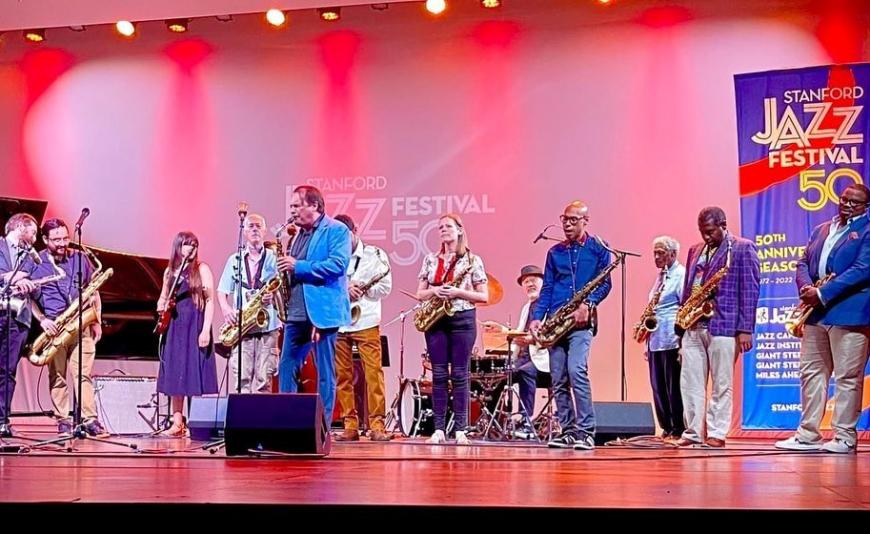
At SFSU, Speight set up Generations, another residency program with another spot for Branford Marsalis. He gained tenure and is currently teaching jazz survey, instrumental, combo, and improvisation classes. “It’s pretty strong there,” he says. “But it needs more recruiting, and we’ve been overhauling our curriculum toward better equity and diversity, jazz being a Black American music.”
Early on, Speight delighted in discovering like musical minds in the clubs and eateries of his new Bay Area home. He played Saturday Night Specials at Jazz at Pearl’s in North Beach and also Wednesdays there with veteran drummer Vince Lateano, then functioning as the quasi-musical director. After Pearl’s closed down, “we took the basic band to the Dogpatch Saloon — I think it was about 2004 — with Vince, Matt Clark, [bassist] Michael Zisman, and myself. We’d open on Sunday afternoons with a set and then open it up to a jam session. That became very successful, until the Dogpatch was sold, and we moved on to the 7 Mile House,” just beyond the city limits in Brisbane. “I think the scene was going through a slump because a lot the dot-com boom had gone bust and people were moving out of town. A lot of musicians moved, too. There wasn’t enough work to support them.”
Nonetheless, the 7 Mile “welcomed us with open arms because we brought a crowd with us. And some of the locals who came in Sundays warmed to the jazz rather quickly. We didn’t have a cover charge, but we were paid and could make good tips. And they fed us and gave us drinks.” Speight and Lateano also brought with them the Doghouse format of following the house band with an open session, dubbed the Doghouse Jam. The saxophonist furthered his reputation for passionate soloing on alto, as well as tantalizing exchanges with regulars Ben Stolorow on piano, Zisman on bass, and Lateano at the drum set. Speight made a habit of dropping in on other 7 Mile jazz gigs throughout the week and set up a series showcasing his college and private students. He took occasional breaks to tour with Delfeayo Marsalis and gig on the East Coast.
The pandemic put a sudden stop to all that, at the 7 Mile and elsewhere, and Speight became one of the first in the Bay Area to make regular use of social media to stream jazz performances, as he’d had to go online for his college classes. As word got out, and the Live at Five sessions moved from the San Mateo backyard of bassist Jeff Saxton to Speight’s own Burlingame home, a new house band took shape, including Sylvia Cuenca on drums, Essiet Okon Essiet on bass, and Matt Clark or Keith Saunders on piano. From March 2020 until recently, Speight’s House of Bop remained a dependable place for players to stay in shape and a destination for such notable out-of-towners as Branford Marsalis, Joey Calderazzo, Craig Handy, and Terell Stafford to listen, play, or both. It may also be the Bay Area’s closest thing to the jazz incubators for emerging players that vitalized the Kansas City and Manhattan scenes in the middle of the last century.
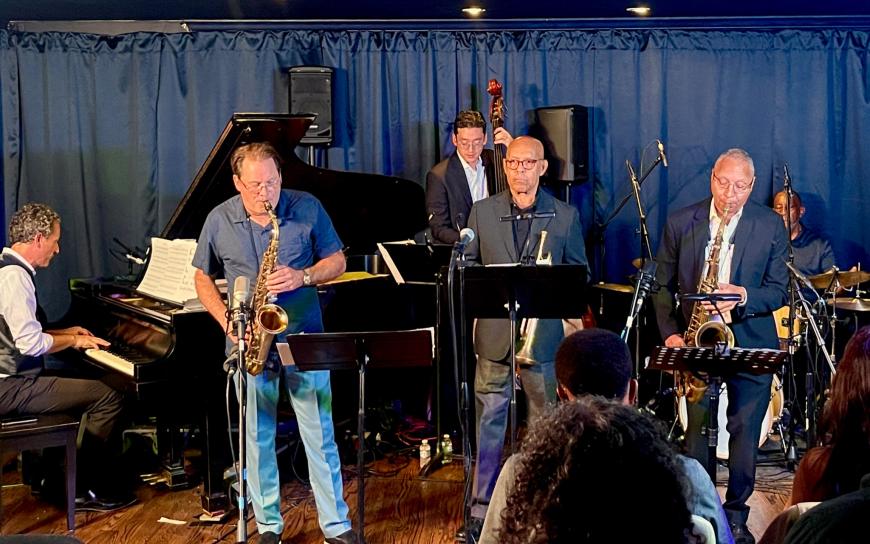
In May and June of this year, Speight inaugurated the four-day Boppingame Jazz Fest, alternating gigs between the House of Bop and the Broadway Grill on Burlingame’s main line, where Speight and friends have been providing post-dinner jazz every Wednesday. In August, he recorded two live sessions by 86-year-old drummer Roy McCurdy, in ensemble with Speight, Clark, trumpeter Eddie Henderson, and bassist David Wong. The recording will be released within the next few months on the House of Bop label, which is also finalizing albums by drummer Randy Gelispie, Speight’s former Michigan State colleague, and by Speight’s own sextet, which includes Clark, Wong, McCurdy, Ralph Moore, and trumpeter Terell Stafford, with special guests Eric Alexander on sax and Tiffany Austin and Jamie Davis on vocals, most of whom have appeared at Live at Five sessions.
Since Live at Five took a break last June, the audio and video systems at the House of Bop have been impressively upgraded, partly in anticipation of a new series of classical concerts, a partnership between Speight Music and Jack Price Attractions, founded by retired concert pianist Richie Atamian. The series started last month with a dynamic but sparsely attended solo piano concert by Fanya Lin, and a second session is planned for early next year.
Speight still serves as co-artistic director, with his sister Caroline, of the Manly Jazz Festival, established by his late father John 41 years ago. It was modeled in part on the Monterey Jazz Festival, in terms of the size of its crowds and the diversity of jazz genres. Unlike Monterey, it’s free to the public. Speight makes trips home in late September and early October to scout talent, as well as to perform at Manly. Sometimes he’s accompanied by his daughter Avery, 14, and son Colin, 18, who are eager to visit with their cousins down under.
Fellow Australian and pianist Simon Rowe reunited with Speight on a visit to the 7 Mile House several years back, after Rowe was made the founding executive director of the Roots, Jazz, and American Music program at the San Francisco Conservatory of Music. “We were both in student ensembles at the Sydney Conservatorium in the early ’80s,” notes Speight. “They just had a couple of jazz elective classes at the time. But they do have a jazz program there now.”
As Bay Area jazz rebounds from the pandemic and other challenges, Speight has been performing at venues outside his own, including Bird & Beckett Books and Records. Following the grand opening of Rowe’s Keys Jazz Bistro on Nov. 10, Speight will join Rowe’s quintet during Thanksgiving week.
And the latest news is that Live at Five will be back in session this coming Sunday, Nov. 6. Attendance is free, but donations are encouraged, and you can find out more on the House of Bop’s Facebook page or by phoning (650) 455-2365. The gig will also be streamed and archived on Speight Jazz’s YouTube channel.


